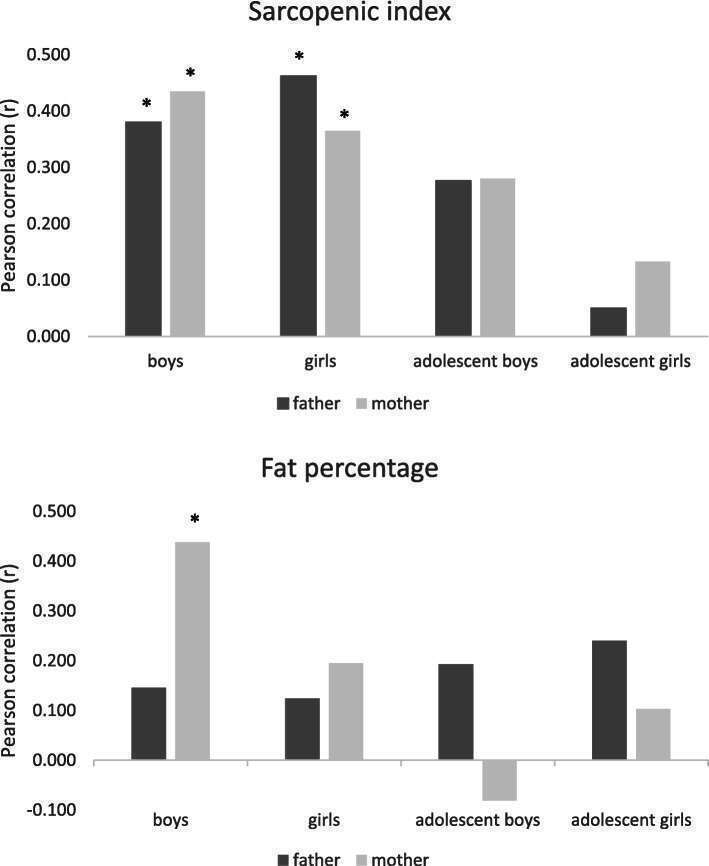
The Heritability of Body Composition
2Sackler Faculty of Medicine, Tel Aviv University
3Statistical Education Unit, The Academic College of Tel Aviv Yaffo
4The Nutrition & Dietetics Unit, Dana-Dwek Children's Hospital, Tel Aviv Sourasky Medical Center,
Background: Physical growth during childhood and adolescence is influenced by genetic and environmental factors. Heritability has been demonstrated for stature and weight status. The aim of this study was to explore the heritability of body composition.
Methods: Observational study of the children and adolescents referred to the Endocrine Unit. Body composition by means of bioimpedance analysis (BIA) was implemented as part of the standard intake assessment of subjects referred for endocrine consultation. The clinic BIA database was searched for subjects with the term "observation of growth" as the sole reason for referral. BIA of 114 triads of healthy subjects aged 5-18 years and their parents were analyzed.
Results: There were sex differences in body composition parameters in both prepubertal and pubertal subjects. Boys among the prepubertal subjects had a lower fat percentage on average than girls (p=0.020). Among the adolescents, boys had a lower fat percentage (p=0.011), higher sarcopenic index (p=0.021), and higher muscle-to-fat ratio (p<0.001), than adolescent girls. Correlation analyses between body composition parameters of all participants revealed significant correlations in the sarcopenic index of prepubertal children and their parents (boys-fathers:r=0.380, p=0.050; boys-mothers:r=0.435, p=0.026; girls-fathers:r=0.462, p=0.012; girls-mothers:r=0.365, p=0.050) and adiposity indices (fat percentage, truncal fat percentage and muscle-to-fat ratio) of prepubertal boys and their mothers(r=0.438, p 0.025; r=0.420, p=0.033, and r=0.478, p=0.014, respectively). There were no associations between body composition parameters of adolescents and their parents. Socioeconomic position adversely affected fat percentage in adolescent girls and mothers.
Conclusions: Heritable body composition traits were demonstrated in childhood but not in adolescence, suggesting that environmental influence has a more telling effect during teenage years.
